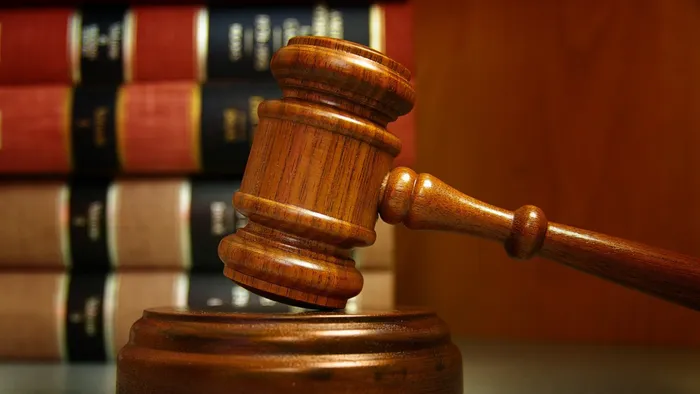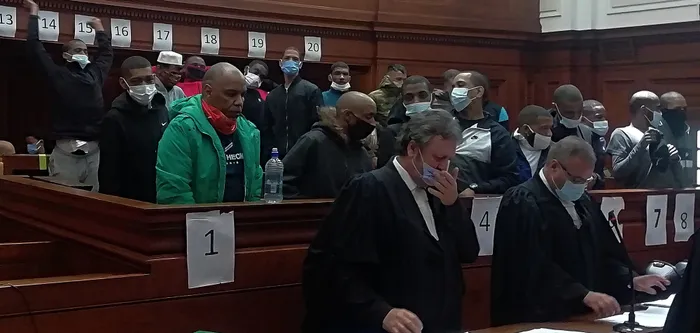Judge rules against State's evidence admission in notorious gang murder case

A warning statement, which the State sought to have admitted as evidence, by a now-deceased co-accused, was deemed inadmissible by the high court this week.
Image: File
THE State was dealt a blow in the notorious gang murder trial against the Terrible Josters' alleged gang leader, Elton Lenting, and his 19 co-accused when its application to have a statement admitted as evidence was denied in the Western Cape High Court.
A warning statement, which the State sought to have admitted as evidence, by a now-deceased co-accused, was deemed inadmissible by the high court this week.

Elton Lenting and 19 others are charged with 145 counts of murder, attempted murder, illegal possession of firearms, unlawful possession of ammunition, drug possession, drug trafficking, kidnapping, assault, arson, and theft.
Image: Rafieka Williams / Cape Argus / File
The statement implicates two of the co-accused. However, Judge James Lekhuleni dismissed the State’s application for the admission of the warning statement of deceased Delano Saptoe against accused 3 and 14.
Lenting and his co-accused face a plethora of criminal charges, including murder, attempted murder, possession of illegal firearms and ammunition.
The application was brought by the State in terms of Section 3(1)(c) of the Law of Evidence Amendment Act 45 of 1988 (the Hearsay Act).
Saptoe was never an accused person in the ongoing trial against Lenting and others. “Ostensibly, he could have been charged with the other accused before this court, but he was not charged due to his untimely demise before the 20 accused were charged and transferred to this court for trial,” said Judge Lekhuleni.
The warning statement submitted by the deceased dealt with issues relating to a shooting incident.
“In the disputed statement, the deceased (Delano Saptoe) implicated accused 3 and 14. Saptoe stated that on a date and time he could not remember, he was with Lorenzo Coetzee, also known as ‘Draad’ (accused 3), and Wandisile, also known as ‘The One’ (accused 14), and they went through a footpath that leads to another street. He then remained seated on the poles on the footpath and accused 3 and 14 proceeded further,” the court record read.
Further in the disputed document, Saptoe stated that he did not know that accused 3 and 14 had a firearm in their possession.
“According to him, accused 3 and 14 went down the footpath… After that, he heard several gunshots going off. When he observed, he saw accused 14 holding a black firearm in his hand, which had a brown handle. Thereafter, accused 3 and 14 came back running, passed him, and told him to run away as the people they were shooting at would come and shoot him. The witness stated that he also ran away. After that, they separated, and that was the last time he saw accused 3 and 14. Saptoe asserted further that he did not shoot anyone, but it was accused 3 and 14 who were shooting,” the judgment read.
Judge Lekhuleni said: “Furthermore, the fact that the deceased did not appear with the 20 accused in this matter is inconsequential. This court accepted several statements of State witnesses in terms of Section 3(1)(c) of the Hearsay Act who were deceased and could not testify in this matter.
“The status of those witnesses whose statements were admitted did not change because they did not testify and are now deceased. They are considered as witnesses even though they are deceased and did not testify. Their status is considered and determined by their position at the time of making a witness statement.
“Saptoe’s status as a co-accused of accused 3 and 14 should accordingly be determined at the time he made the statement.
“The warning statement was clearly made by an accused person or suspect who, in this instance, appeared as a co-accused with accused 3 and 14 in the lower court. Consequently, based on the legal principles discussed above, the impugned statement of Delano Saptoe is inadmissible against accused 3 and 14.”
Cape Times
Related Topics: